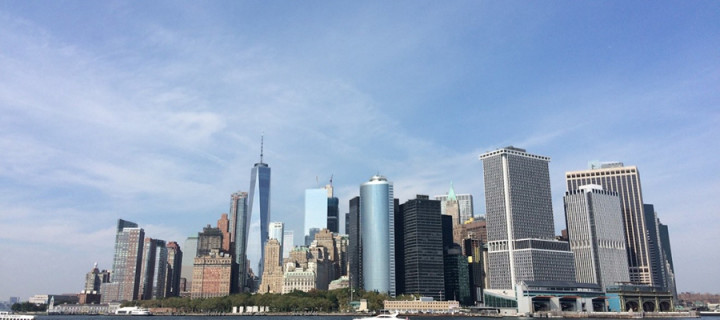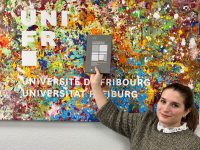Discover New York City – through the eyes of great poets – and Anna. She visited the city that never sleeps with Thomas Austenfeld, Professor of American Literature, and 26 other students of his class. Poems like «The Subway Platform» by Sheck, Lorde’s «A Trip on the Staten Island Ferry» and «Mannahatta» by Whitman guided the class through their big city adventure. Read more about the unique experience of Student Anna Vestermark Caccia, who tells us about 9/11, Central Park and a lot more in her four essays.
On our last full day in New York City, we visited the Tenement Museum in the Lower East Side, America’s iconic immigrant neighborhood. 97 Orchard Street, built in 1863, was a tenement apartment building home to many immigrants. Our tour, called «Hard Times», consisted of a visit of the restored apartments of the German-Jewish Gumpertz family, and the Italian-Catholic Baldizzi family.
Five years of rent
Natalie Gumpertz arrived to New York from Prussia in 1858, aged 22. At the time, the United States applied an open door policy, in order to catch up with industrialized Europe. Everyone was welcome. Natalie soon met her fellow citizen Julius, they got married and had four children. He was a shoemaker and only made $10 a week. Poverty was seen as a moral failure, and a cause of shame. Only those who raised their children with the «right» values were considered worthy of financial aid. One day in 1873, Natalie’s husband and father to four children didn’t come home. This phenomenon was sadly not rare. Natalie’s opportunity to improve her life arrived three years later, with the death of Julius’ father in Prussia. She managed to inherit the money ($600 – sufficient to pay five years of rent!), by claiming Julius was dead. Natalie and her three children (one died at the age of four) moved to the Upper East Side, where a large German community resided.
Italian Americans
The Italian Baldizzi family lived in the building in the 1930s. A lot had changed: there was finally electricity, and a bathroom in the hallway (instead of the toilets in the backyard). Adolfo Baldizzi moved to New York City from Palermo, as there were no economic opportunities in Italy as a carpenter (he knew he could earn ten times as much in the United States). He arrived in 1923, after his marriage, but his wife Rosaria was unable to go with him. The Immigration Act of 1924 limited the number of immigrants, especially from Eastern and Southern Europe. The theory of eugenics played an important role: only the «superior race», and the genetically fit, were welcome to the United States. Rosaria was no longer fit to become Americans, and had two options: wait for years, or travel illegally. She chose the latter, and we know she lived in the building between 1928 and 1935. Adolfo and Rosaria had two children, Johnny and Josephine. A recording of Josephine talking about the family life depicts a joyous and serene picture (we must, however, remember that she was about 8 years old when she moved out, so her memories are those of a naïve girl): the radio was always playing Italian music, life was busy, Adolfo would play with the kids, and Rosaria would cry because she missed her home country and family. The house was always clean and the children were raised to be «Americans». The Great Depression in 1929 caused Adolfo to have troubles finding a stable job, and Rosaria worked seasonally in a coat factory. As they were not citizens, they feared deportation. Roosevelt’s «Home Relief» program helped them survive, and pictures of him were on the walls near those of saints. In the 1930s, immigration was not as important, and only seven apartments of the building were inhabited. When the tenant decided to evict the remaining families, the Baldizzis moved to Brooklyn, where Adolfo got a job building ships. They managed to visit Italy after the Second World War, and were shocked to see that the country they remembered and loved had changed, devastated after the war. They now felt American, and were proud of their new identity.
No big changes
The inhabitants of 97 Orchard Street faced challenges that are still current today: they struggled to make a new life, worked for a better future and started a family with limited means. Thousands of people still do so. New York is known as the city of dreams – if you can make it here, you can make it anywhere; that’s what they say. You can only count on yourself, and «do something every day to remind this city why the hell you’re here», as a graffiti says.
__________
- Photos: Domitilla Cerclé
- Central Park. Health 1 – Stress 0 - 02.02.2017
- The City of Dreams - 01.02.2017
- 9/11 - 19.01.2017














